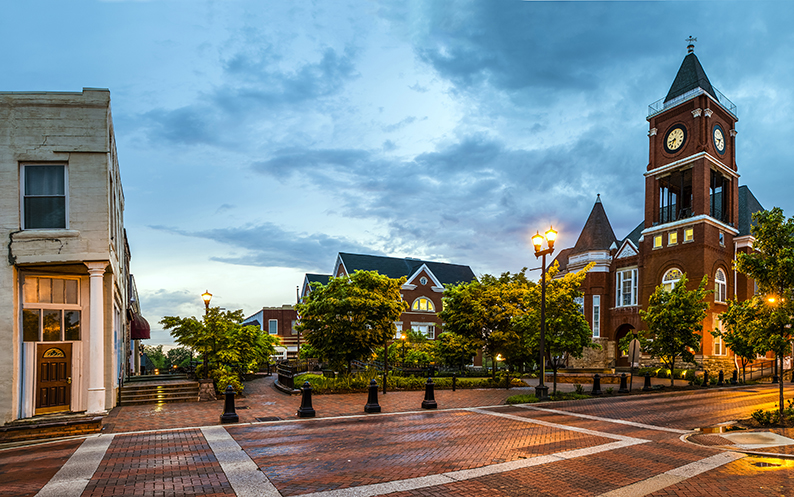I’ve got dreams on my mind – specifically community ones. With municipal elections on the near horizon and the current state of the global economy, I’ve been thinking lately about how our community will respond to these events.
While my role at the Centre is to help communities articulate their aspirations for a better future and get there, I’ve also got kids, a mortgage, debt, taxes, and, like many people, lots of things on my mind. In fact, I’m feeling just like everyone else and what they’re focusing quite a lot on today. When we ‘feel’ that our prosperity is on the line our focus turns inward to the present. In this state it is difficult to think about shared community aspirations and better futures. That seems rationale doesn’t it? I mean if we are feeling personally vulnerable today, why care about next month, next year or even the next 10 years?
I know that I’m not alone; citizens everywhere are questioning the need for long term community dreams, visions and paths to a better place. “Achieving these dreams costs too much”, “we don’t want to pay for it today” is the mantra expressed with the belief that tomorrow’s future is incompatible with today’s reality. Visions of sustained success for our communities are being brushed aside and being called a waste in an attempt to make room for discussions about tightening our financial belts, better (less?) government, and creating jobs.
But if we step back from our fear for a moment and consider this, aren’t these really one in the same?
I’ve yet to read a shared community vision that doesn’t strive for efficiency, more effective government and jobs for everyone. How is it then, that these community visions and current issues get cast in opposition of each other? Perhaps it is because the three most commonly shared priorities in these plans: ensuring a strong economy, enriching our communities, protecting and restoring the environment for us and for future generations, are often framed as incompatible to one another. This has to change, and a greater understanding of how change happens is what’s needed.
Yes, there is a little truth to the notion that, in the short term because of established structures, there may be short term trade-offs that need to be made (like relying on car travel for your business success and income despite the real environmental and human health impacts of fuel combustion) between these goals. But does this mean it makes sense to just give up on your community’s greatest shared aspirations and accept these trade-offs as foregone conclusions forever?
No. The truth is that the places that are enjoying the most success are organizations, communities and individuals that hold onto their visions. They are finding ways to make them work, and they do this by getting creative. This means they are finding short term success while making the types of short term trade-offs that still allow them to get to their end goals. In other words, they aren’t throwing the baby out with the bathwater. For every incompatibility truth (think: it’s the environment OR the economy), there are stories of real success where communities and businesses are blowing up entrenched thinking to find smart ideas that lead to economic, social and environmental success at the same time.
Take Kristianstad, Sweden for example, as profiled recently in the New York Times. This community had a vision to create more jobs, enhance their energy supply, and ensure price security in the city. So in 1999 the city pledged to wean itself from fossil fuels. I can’t think of a vision that is trying to achieve something that most consider impossible. But they did it. And they are succeeding.
Today, Kristianstad has reduced the need for fossil fuels for all community heating to virtually zero and the city is focusing on transitioning the community transportation system to run on locally made biogas. This biogas is already used significantly by the city itself; in fact, it’s helped them to avoid purchasing over 2 million litres of diesel or gasoline every year. The city’s heating systems have cut their heating bills more than half to $3.2 million from $7 million.
What is notable about this community’s approach is the compatibility of their goals: secure relatively safe, stable, lower cost energy, provide local jobs and ensure emissions reductions. (You can view the NYT slide show here.)
The thing about community dreams is that they exist in the future and therefore, by definition, the way in which we achieve them has not yet been written. In fact, the comment that “achieving these dreams costs too much” doesn’t even make sense, given the fact that we have never gotten there to know that. Sure your community may have tried to get there in the past, failed and learned, or not, but today is not the past and the approaches to get there need to be undertaken because the benefits can be so great.
Henry Ford, the American businessman, once said, “If you think you can do a thing or think you can’t do a thing, you’re right.” The same advice applies to a community. So instead of lowering your aspirations and dreams and succumbing to the camp of past assumptions that say “you can’t do it” or “it costs too much” consider going after your community’s dreams and aspirations with more intent, more vigour, more intelligence, more friends, tougher questions and, of course in this day and age, with a sharpened pencil.
I mean really – it is clearly in everyone’s best interest to fulfill your community’s highest goals. After all, we decided what they should be. So get out there and do your part to make them happen.
by Dan Wilson

